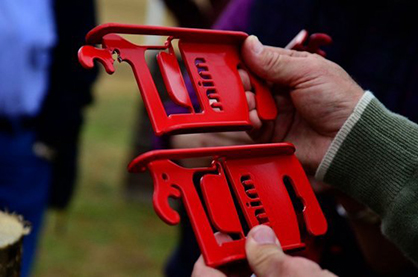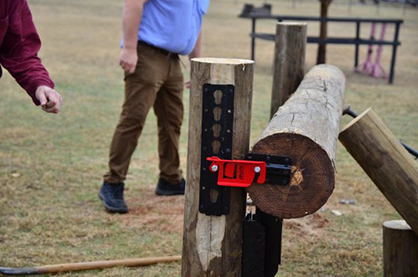Crash! Do You Know Happens When Your Horse Hits a Jump?
Many people don’t, and scientific research on the topic is spotty at best. That’s one of the reasons why The United States Eventing Association began work on a Collapsible Fence Study that has now completed its first year of data collection.
Dr. Suzanne Weaver Smith, Ph.D. of the University of Kentucky has partnered with a group of researchers to examine all the factors associated with rotational falls in an effort to understand the science behind the deadliest type of falls for both equines and equestrians.
For those unfamiliar with the term, a rotational fall occurs when a horse hits a fence with the front legs or chest, causing the body to somersault over the obstacle. In essence, the fence acts as a pivot point. The size and shape, or mass and inertia, of a horse and rider affect the outcome of a fall. “How forward motion turns into rotational motion is because of the size and shape of what’s overturning,” says Dr. Smith (USEA, 2017).
The challenge for researchers is the lack of data on the subject; at the onset of the study, there were only 4 papers that referenced relevant equine mass. “What’s happening at the point of contact between the horse and the fence is a big unknown,” Dr. Smith says. “That’s what really has to be understood better in order to have recommendations and requirements enabling new devices of frangible fences,” (USEA, 2017).

The frangible pin at the top has broken, fulfilling its purpose of allowing a rail to drop, and the one below is still intact. Photo Credit: Leslie Mintz/USEA
A frangible fence is one that incorporates a breakable pin that’s designed to fail at a specific strength. But that doesn’t mean it’s a breakable fence. The idea is that the frangible mechanism will allow the rail to drop, which prevents the horse from somersaulting and rotating over the fence, creating a scenario that’s very dangerous for both horse and rider.
A 2009 document entitled Frangible Fences cites work done by the Transport Research Laboratory, which conducted film analysis of 100 accidents- 75 Cross Country and 25 Show Jumping. The study determined that the potential for a crushing injury directly related to the rotation motion and landing angle of the horse. “A landing angle of more than 90 degrees was considered to provide a significant risk of crushing injury to the rider. This happened when the horse hit a fixed obstacle between its knee and elbow. Below this, the horse was able to scrabble over, but above this, the horse stayed behind the fence with the rider staying seated or ejected over the fence,” (Frangible Fences, 2017).
To gain more data for analysis, Smith and her team looked at a 2008-2009 study done by British Eventing that measured non-rotational falls on cross-country courses. The angle of impact was measured each time a horse made contact with a fence. The majority of front leg angles were around 45 degrees above the horizontal. However, different scenarios provided different results. For example, the contact angles were larger for the back rail of an oxer fence. In addition, negative angles were recorded when the impact was measured as the horse was “coming up in the front.”
“For 38% of the jump approaches, the horses made contact with the fence,” Dr. Smith says. “Any of these safety devices have to work in that environment, where they are going to get hit over and over again, and then they still have to work the way they are supposed to when it’s needed.”
In the second year of the Collapsible Fence Study, Smith and her team will use measurements of horses, survey data, and video analysis to create computer models for simulations. This is much like the method NASA used when determining the range of risks associated with overturning a lunar landing, prior to the first landing on the moon!
Now that this study is well underway, we wonder if anyone has ever thought about what happens when a horse hits a log in a Trail class? Although, the impact is clearly not as immediately dangerous, it does happen a lot more frequently and repeatedly…












